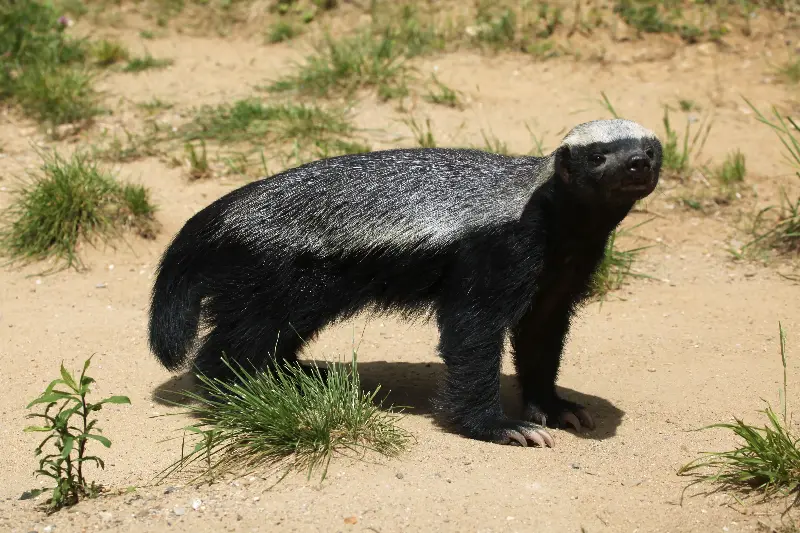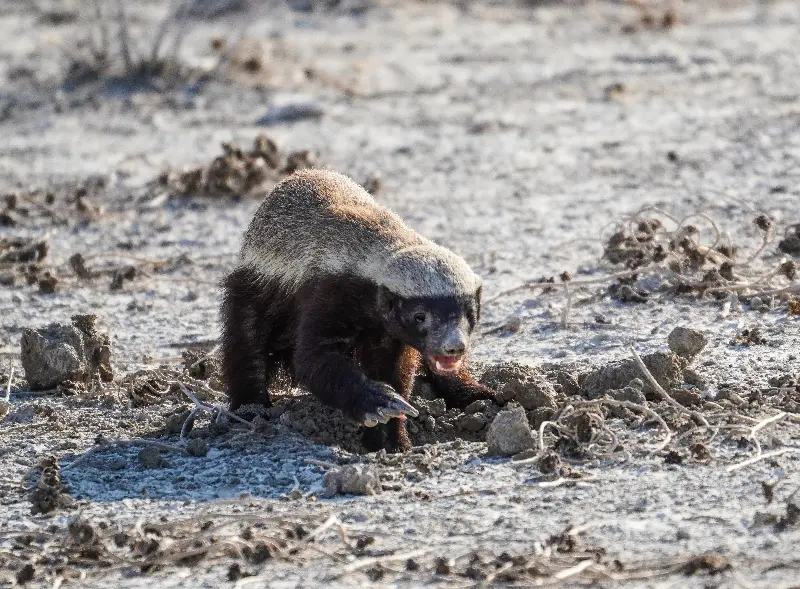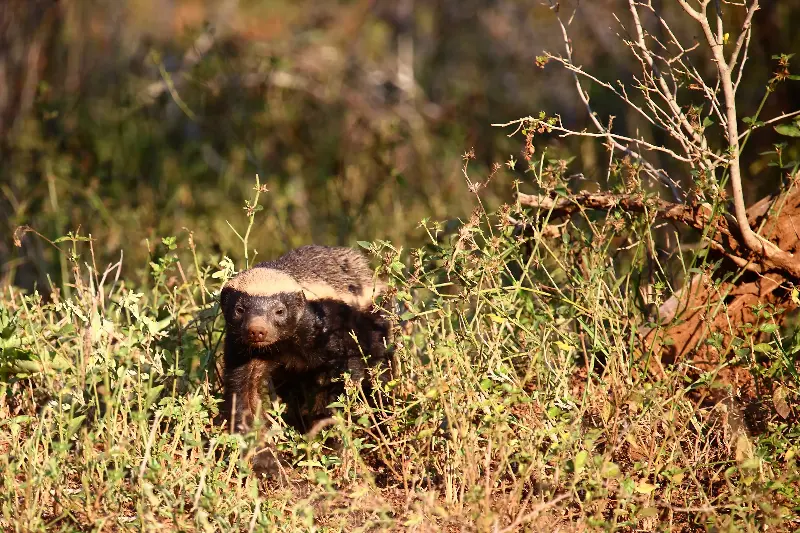If you were to imagine the world’s toughest animal, you might picture the mighty lion, the hulking rhinoceros, or the elusive leopard. But what if I told you that the real heavyweight champion of survival is neither the biggest nor the strongest? Instead, it’s a small, stocky mammal with a mischievous glint in its eye and a reputation for pure, unfiltered boldness—the honey badger. From its unrivalled ferocity to its almost supernatural resilience, this animal continues to fascinate wildlife enthusiasts and researchers alike. Let’s delve into the untold truth about the honey badger and discover the surprising reasons it has earned its place as nature’s most unyielding survivor.

Anatomy Built for Battle
While honey badgers may seem unassuming at first glance, their bodies are uniquely designed for both attack and defence. An adult honey badger, also known as a ratel, measures just about 25 centimetres at the shoulder and can weigh anywhere from 9 to 16 kilograms. However, it’s their skin that truly sets them apart. Honey badgers sport a remarkably thick, loose hide, especially around the neck and shoulders. This isn’t just for show—their hide protects them from the bites and stings of predators and even allows them to twist around and fight back if grabbed.
Their sharp, curved claws make them expert diggers, not just for hunting prey underground but also for quickly constructing escape burrows. Plus, their teeth are as fierce as any big cat’s, capable of crushing bones and tearing through tough exteriors. Evolution has truly equipped honey badgers with the tools needed to both attack and repel nearly any threat in their fierce African and Asian habitats.

A Palate Like No Other
What a honey badger will or will not eat is a much shorter list than what it does eat. These animals are famously omnivorous and regarded as nature’s most opportunistic eaters. They will hunt and consume anything from rodents and birds to poisonous snakes and scorpions. In fact, honey badgers are famously undaunted by venom. They attack cobras, puff adders, and other deadly snakes, often getting bitten in the process. What’s truly amazing is their ability to shrug off doses of venom that would kill much larger animals. It’s reported that a honey badger bitten by a venomous snake may collapse for some time, but can often recover fully and polish off its meal as if nothing happened.
Their name also hints at another obsession—honey. Honey badgers are notorious for raiding beehives, unfazed by swarms of angry bees. They have the courage to endure hundreds of stings to dig out sweet honey and the nutritious larvae that come with it. Some evidence even suggests they may have a symbiotic relationship with the greater honeyguide bird, which leads them to hidden hives in exchange for leftovers.
Fearless To A Fault
The honey badger’s attitude is its most famous trait. Descriptions of the animal frequently include terms like ‘fearless’, ‘incredible persistence’ and even ‘reckless abandon’. Videos have viral showing honey badgers fending off lions, leopards or packs of wild dogs. They don’t come out on top every time, but their willingness to challenge apex predators is nothing short of remarkable.
What makes this behaviour even more fascinating is the honey badger’s apparently outsized sense of confidence compared to its small stature. Researchers believe that part of their success comes from their aggression. When threatened, they become even more dangerous, releasing a strong-smelling secretion from their anal glands—an effective deterrent for many would-be attackers. Some scientists theorise that their brash behaviour is a calculated survival tactic, intended to bluff larger predators and create an opportunity to escape.

Intelligence and Problem-Solving Skills
While fearlessness is often the star of the honey badger’s reputation, their intelligence is equally deserving of attention. Several studies and field observations have revealed honey badgers are capable of impressive problem-solving skills. In captivity, honey badgers have been seen using tools such as sticks, stones, and even rakes to surmount obstacles and escape their enclosures. One famous honey badger, named Stoffel, became an internet sensation for his ability to open locks, use mud, and even move tyres to climb over the walls of his enclosure.
This resourcefulness also extends into the wild. Honey badgers have been observed collaborating with other animals, such as following honeyguide birds to food sources. Such intelligence allows them to thrive in diverse environments and adapt quickly to new threats or challenges.
Misunderstood Loners
Despite all their rough-and-tumble traits, honey badgers are largely solitary animals. Encounters between individuals are usually brief and can even turn aggressive. Males and females only come together to mate, and the mother raises her young alone, providing them with the extensive training they’ll need for the rough world ahead. Cubs are especially vulnerable, but under their mother’s fierce tutelage, they soon learn to fend for themselves.
Their solitary and secretive nature means that there is still much we don’t know about them, as observing them for extended periods in the wild can be a difficult task, even for experienced biologists.

Why Honey Badgers Matter
It’s easy to view the honey badger as merely a curiosity or a viral sensation, but their role in the ecosystem cannot be understated. As formidable predators, they control populations of rodents and dangerous snakes, making them essential for the balance of their environments. Their willingness to raid beehives may frustrate beekeepers, but it also helps disperse seeds and control insect populations.
Moreover, the honey badger’s legendary toughness is a reminder of the importance of resilience and adaptability in nature. They have become a symbol not just of fearlessness but of the clever determination needed to survive in an ever-changing world.
The honey badger might not be the biggest or the fastest, but what it lacks in size it more than makes up for in spirit, intelligence, and unbreakable willpower. In the face of overwhelming odds, it does precisely what many of us aspire to do: it never, ever gives up.
